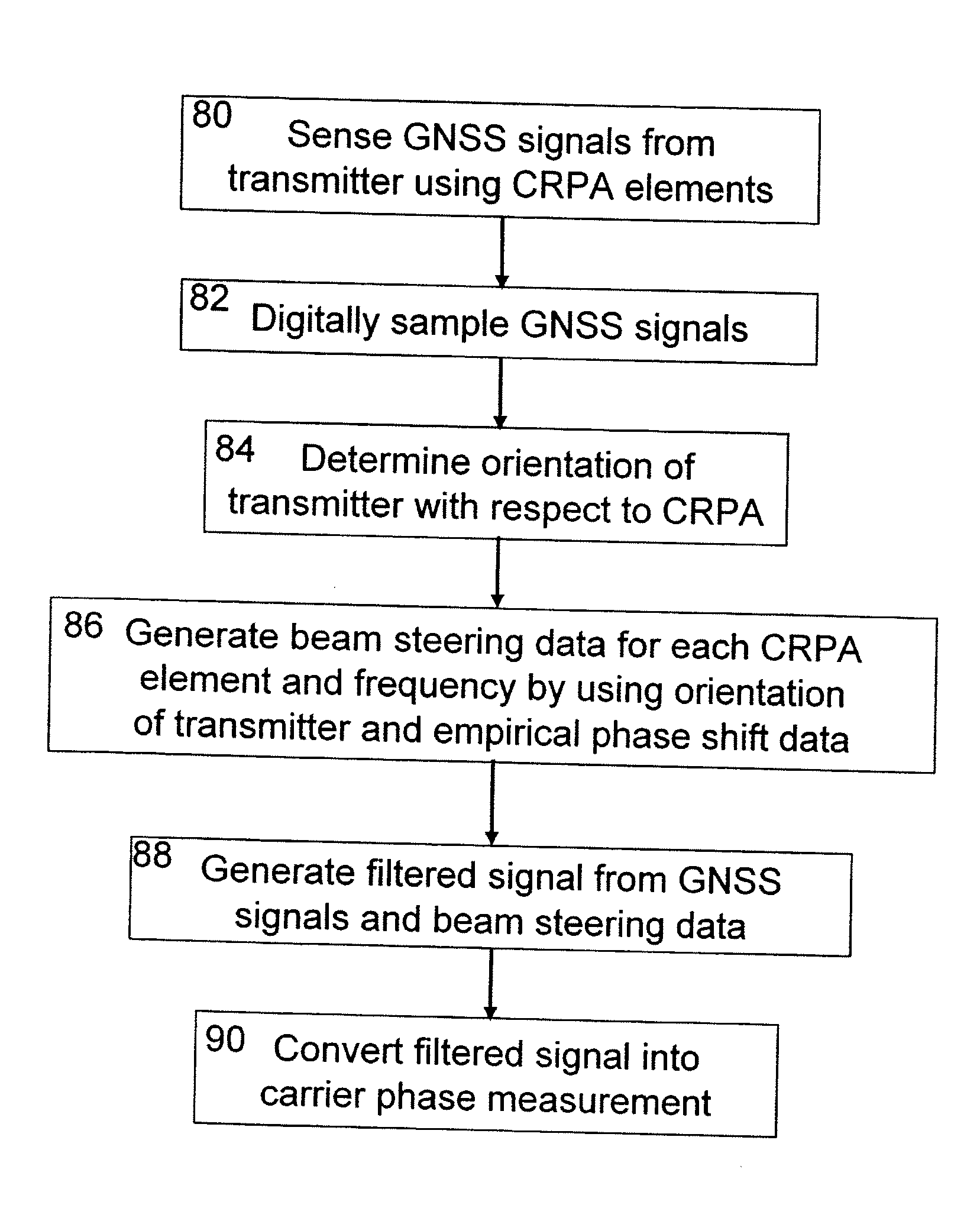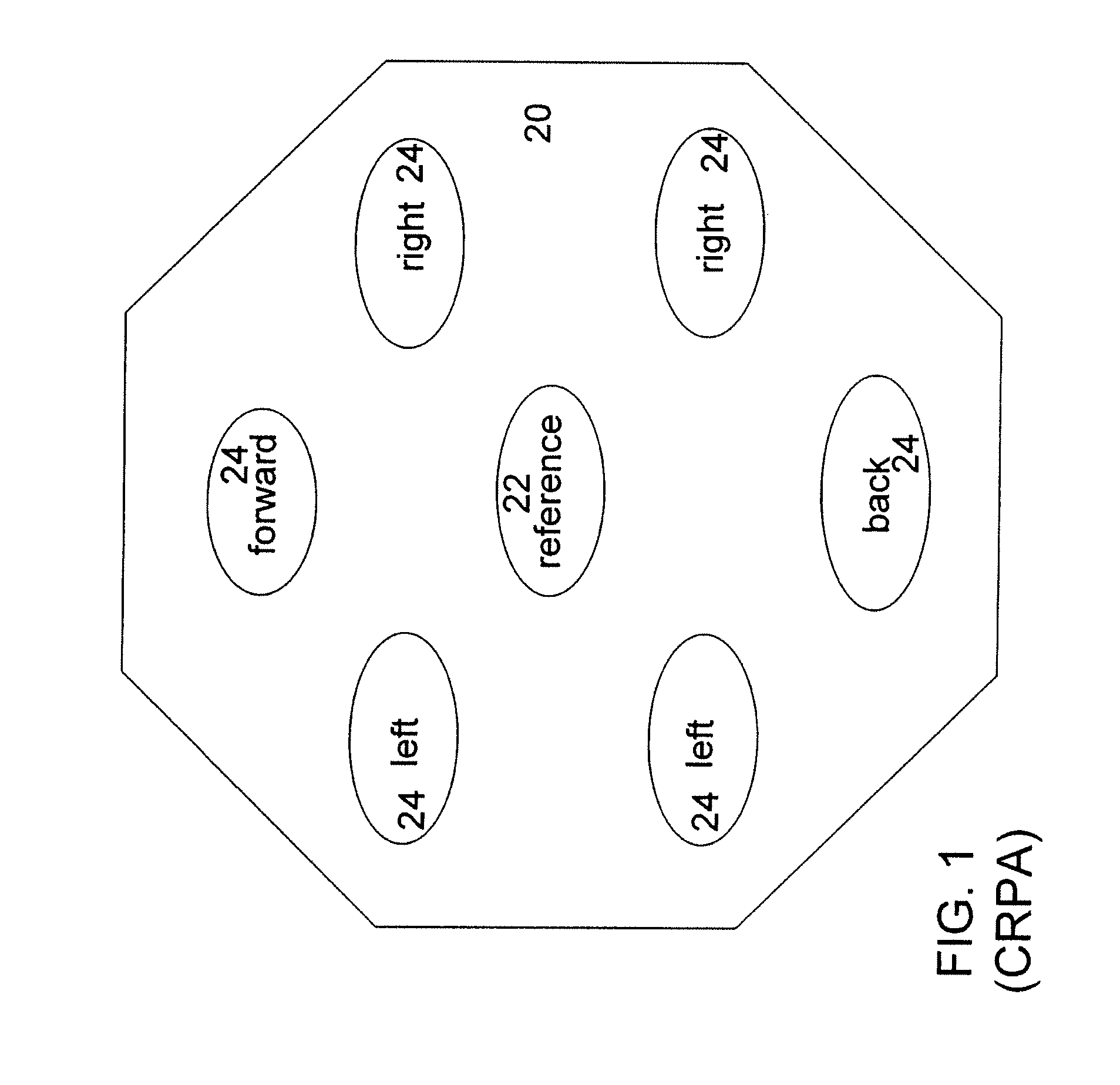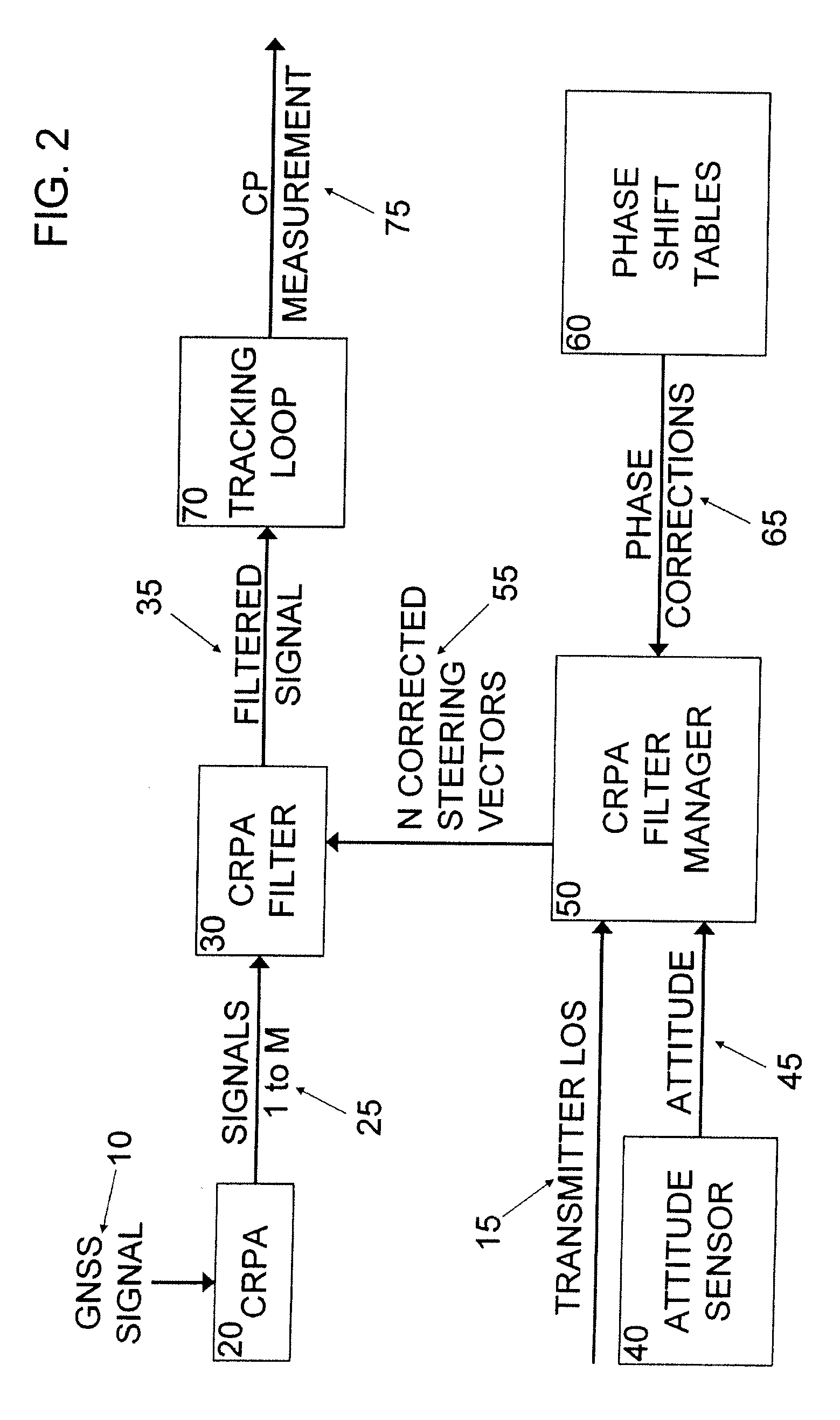System and method for correcting global navigation satellite system carrier phase measurements in receivers having controlled reception pattern antennas
- Summary
- Abstract
- Description
- Claims
- Application Information
AI Technical Summary
Benefits of technology
Problems solved by technology
Method used
Image
Examples
Embodiment Construction
[0031]The illustrative embodiments that follow are only exemplary applications of the present invention and not intended to limit the scope of the invention.
[0032]A preferred embodiment of the invention comprises a GNSS CRPA receiver system on a dynamic platform, such as an aircraft. FIG. 1 shows an exemplary CRPA 20 comprising seven antenna elements (channels). In FIG. 1, the seven elements are comprised of one reference element 22 and six auxiliary elements 24, where the reference element 22 is the principal element centered with respect to the seven elements while the six auxiliary elements 24 surround the reference element 22 in a symmetrical layout: one forward, one back, two on the left, and two on the right. Note that a CRPA may consist of other numbers of elements, and the elements may differ in relative orientation, which may be either symmetric or asymmetric.
[0033]Referring now to FIG. 2, CRPA 20 receives a signal 10 from one or more radio navigation transmitters, such as ...
PUM
 Login to View More
Login to View More Abstract
Description
Claims
Application Information
 Login to View More
Login to View More - R&D
- Intellectual Property
- Life Sciences
- Materials
- Tech Scout
- Unparalleled Data Quality
- Higher Quality Content
- 60% Fewer Hallucinations
Browse by: Latest US Patents, China's latest patents, Technical Efficacy Thesaurus, Application Domain, Technology Topic, Popular Technical Reports.
© 2025 PatSnap. All rights reserved.Legal|Privacy policy|Modern Slavery Act Transparency Statement|Sitemap|About US| Contact US: help@patsnap.com



